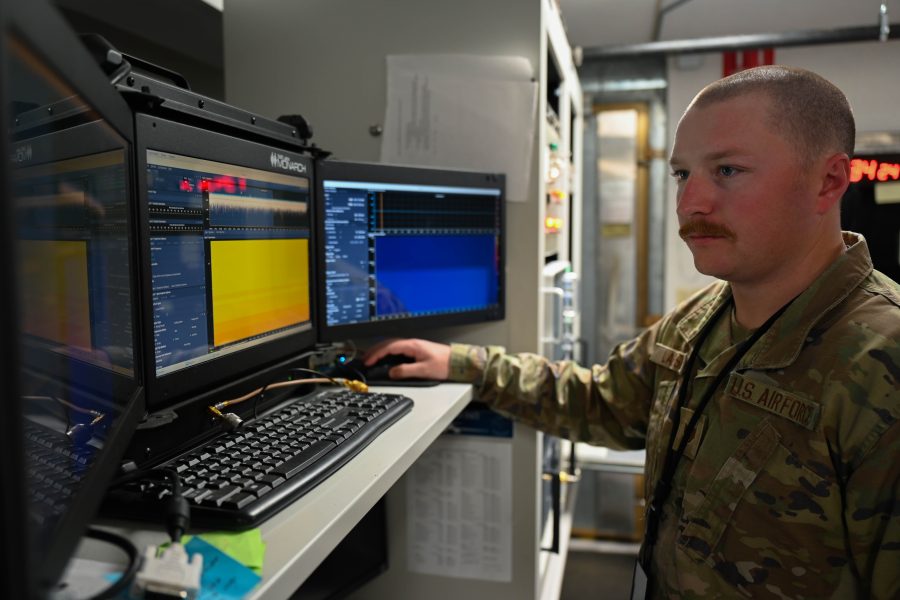The Air Force’s lone spectrum warfare wing is getting faster—much faster—in gathering data and responding to new threats, its leader said last week.
The world of electronic warfare is often compared to a game of cat-and-mouse, with both sides constantly shifting tactics, frequencies, and software to both jam and evade jamming. For the Pentagon’s EW leaders, that means a need to rapidly detect and adapt to changes, they said June 5 at the C4ISRNET conference.
“We’re in an area of perpetual novelty, and our adversaries are going to be able to move and change and be agile on the spectrum just as much as we are,” said Col. Joshua Koslov, commander of the 350th Spectrum Warfare Wing.
Last September at AFA’s Air, Space & Cyber Conference, Koslov told reporters he wanted his wing to be able to sort through data to detect any changes in an adversary’s EW approach, develop a software solution, and deploy it in three hours. Such a capability, he said, would be a “moonshot” and a vast improvement over the weeks or months it can often take the Pentagon to update software.
“We just executed our first internal exercise … we call it exercise Rapid Raven, and at AFA I said we need to be able to do this in three hours,” Koslov said June 6. “That’s based off the Force Commander requirements. And quite frankly, we’re very close to that, if not exceeding that in most of the systems that we cover in the spectrum warfare wing.”
The wing first announced Rapid Raven in March, saying in a release at the time that it “simulated 24-hour operations” by challenging Airmen to sense, respond, and reprogram against new threats in the spectrum.
The exercise pressed Airmen to work fast and also showcased where the wing needs more resources, the release noted.
Out of more than 70 EW systems his wing touches, Koslov said “more than half of our systems are near or underneath the deadline that I set out over at AFA. And most of that is just a re-honing of our [tactics, techniques, and procedures] and our process.”
Broadly speaking, Koslov added, the entire joint EW force has improved its high-end exercises and training by “leaps and bounds.”
But it’s not just training that will help speed up the process. Spectrum warfighters also need the infrastructure and tools to do so, said Army Brig. Gen. Ed Barker, program executive officer for intelligence, electronic warfare, and sensors.
“Some of these capabilities based on the pace of the enemy, they’re going to become very perishable,” Barker said. “So it’s our ability to iterate quickly and having the openness in the architecture and understanding the data, that’s really the critical aspect.”
For the Air Force, that means investing in things like the Crowd Sourced Flight Data program, which creates “the ability to receive lots of data from joint, coalition platforms and then rapidly turn that into combat capability and transmit that back out to the force,” Koslov said.
For the system to work, Koslov added, the service must have the architecture to handle the massive streams of data coming in and send out updated software to hundreds of different systems in the field. It will also need artificial intelligence and other technology to sort through and detect changes in that data. Koslov noted that such tech might not quite reach the level of what some call “cognitive” EW just yet, but said his wing is interested in near-term solutions.
“What we’re proposing is, as we develop the near-term solutions using Crowd Sourced Flight Data, is democratizing the data that we’re able to collect within our data architecture, and providing that to our joint force partners or academic partners or industry partners in order to develop a system that’s able to develop new and novel things very quickly,” he said.


